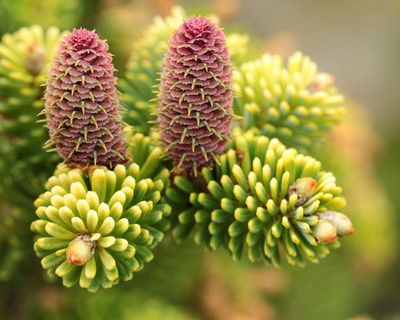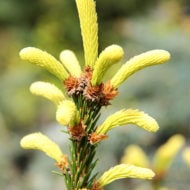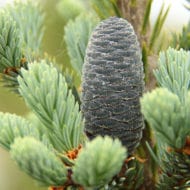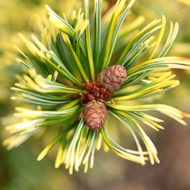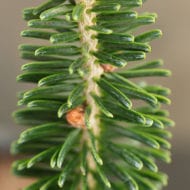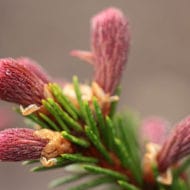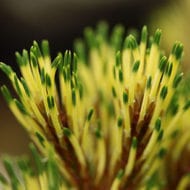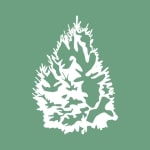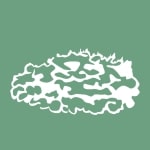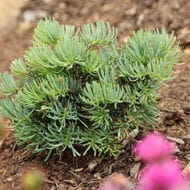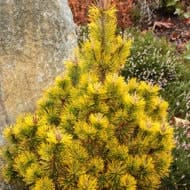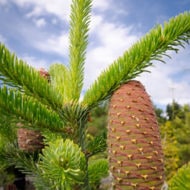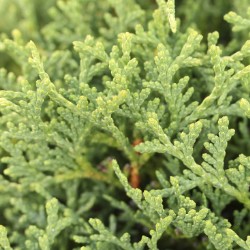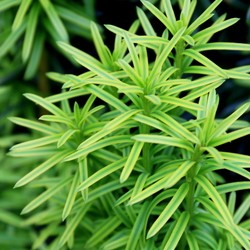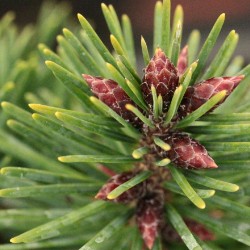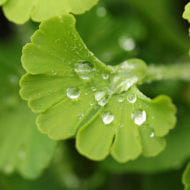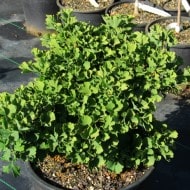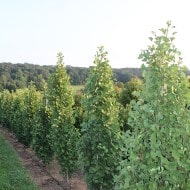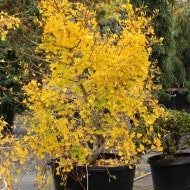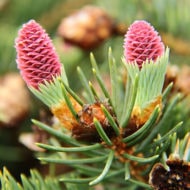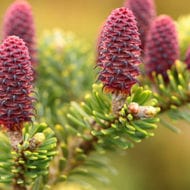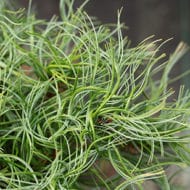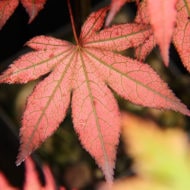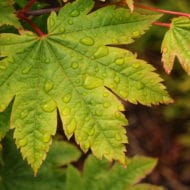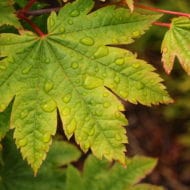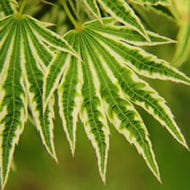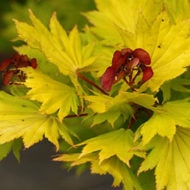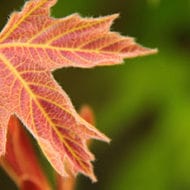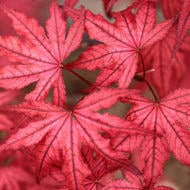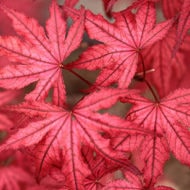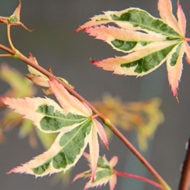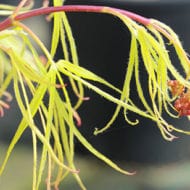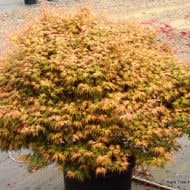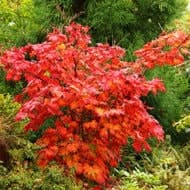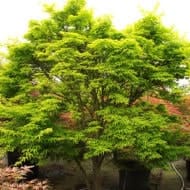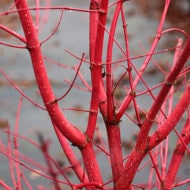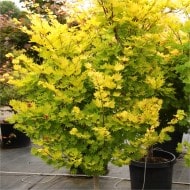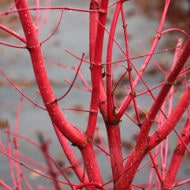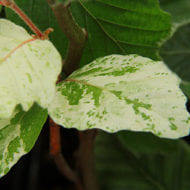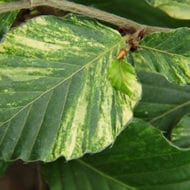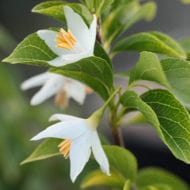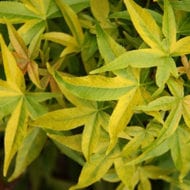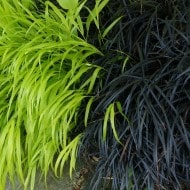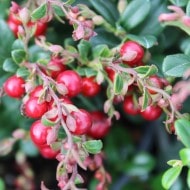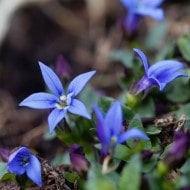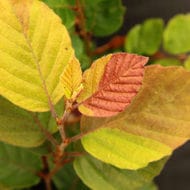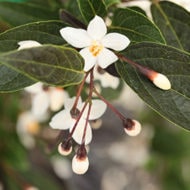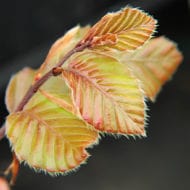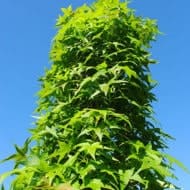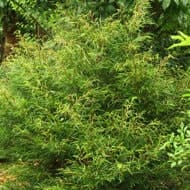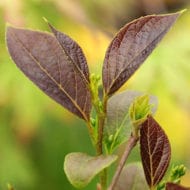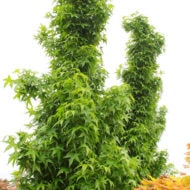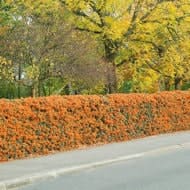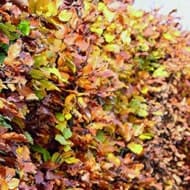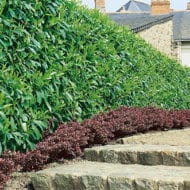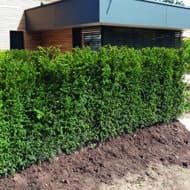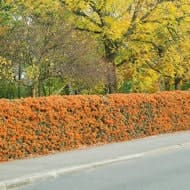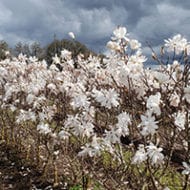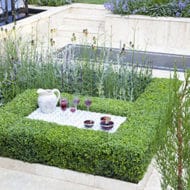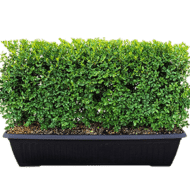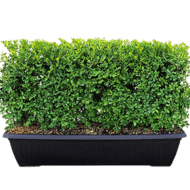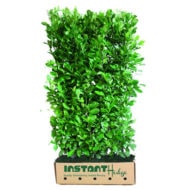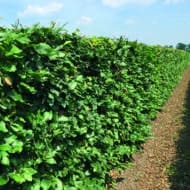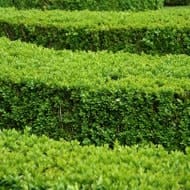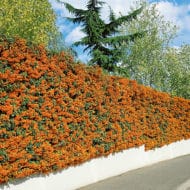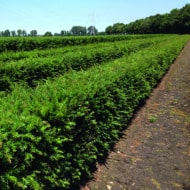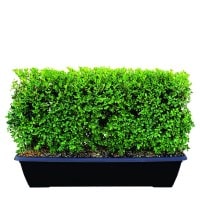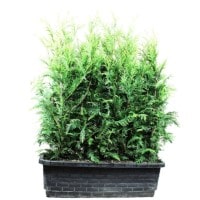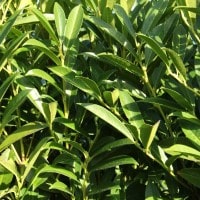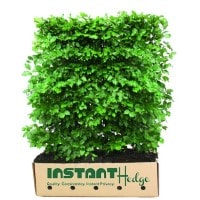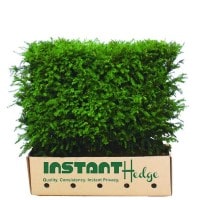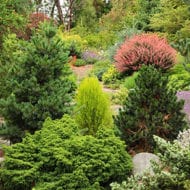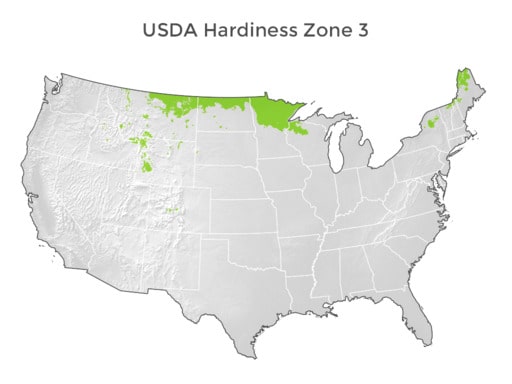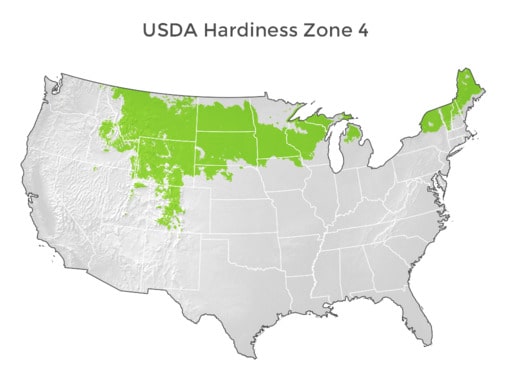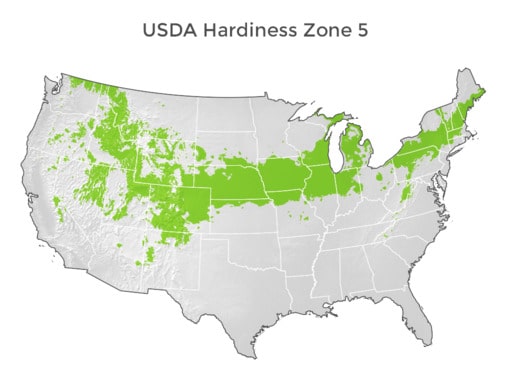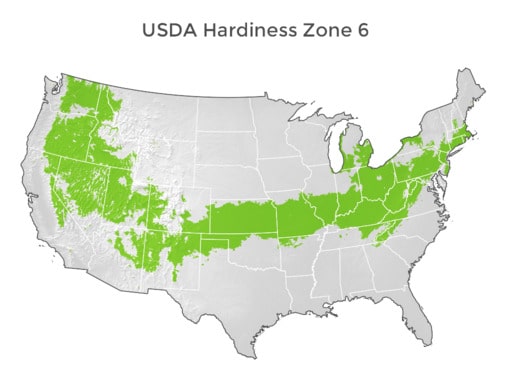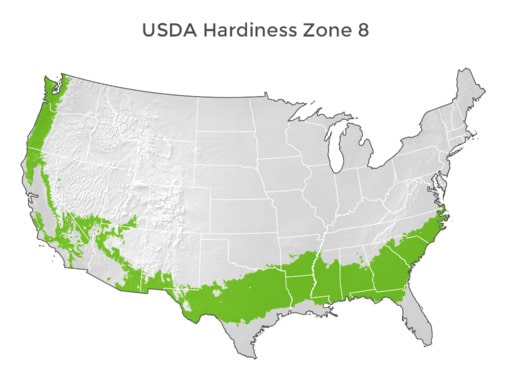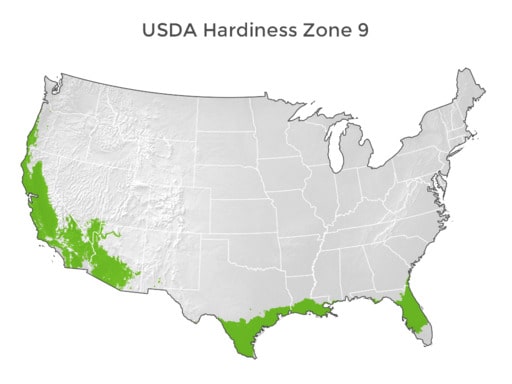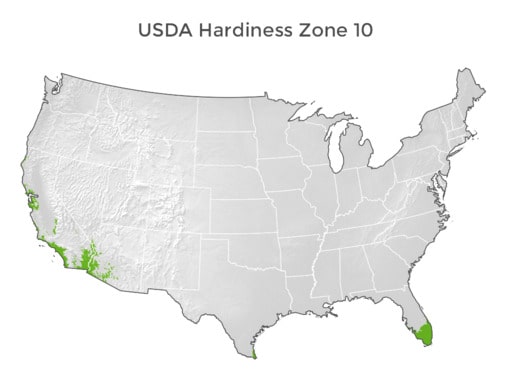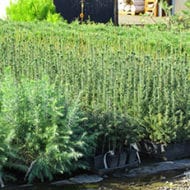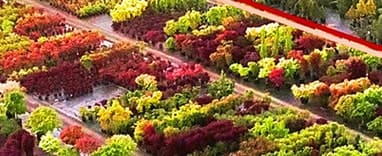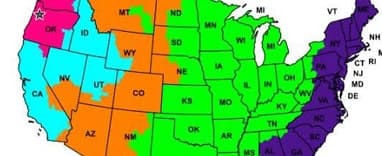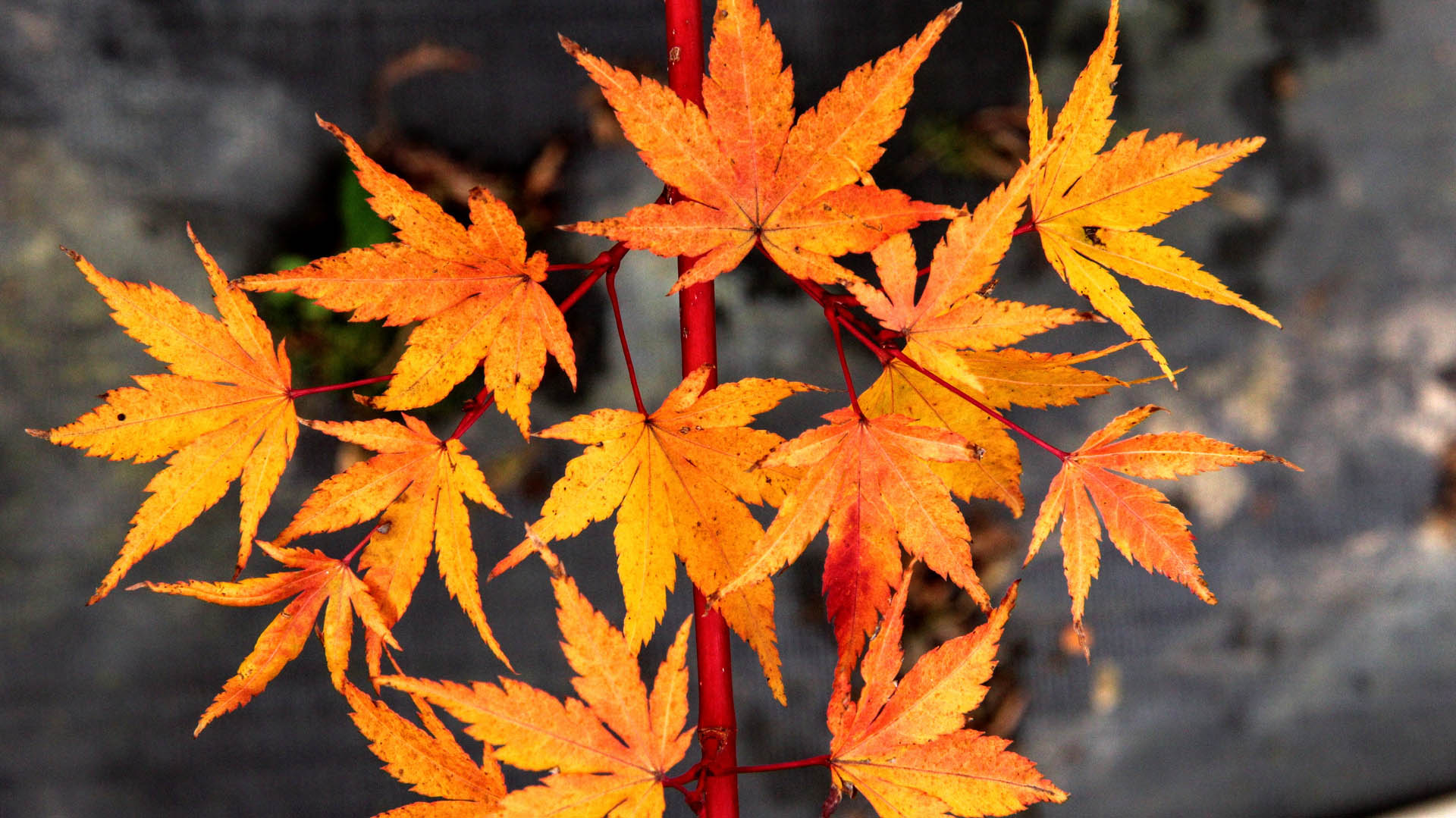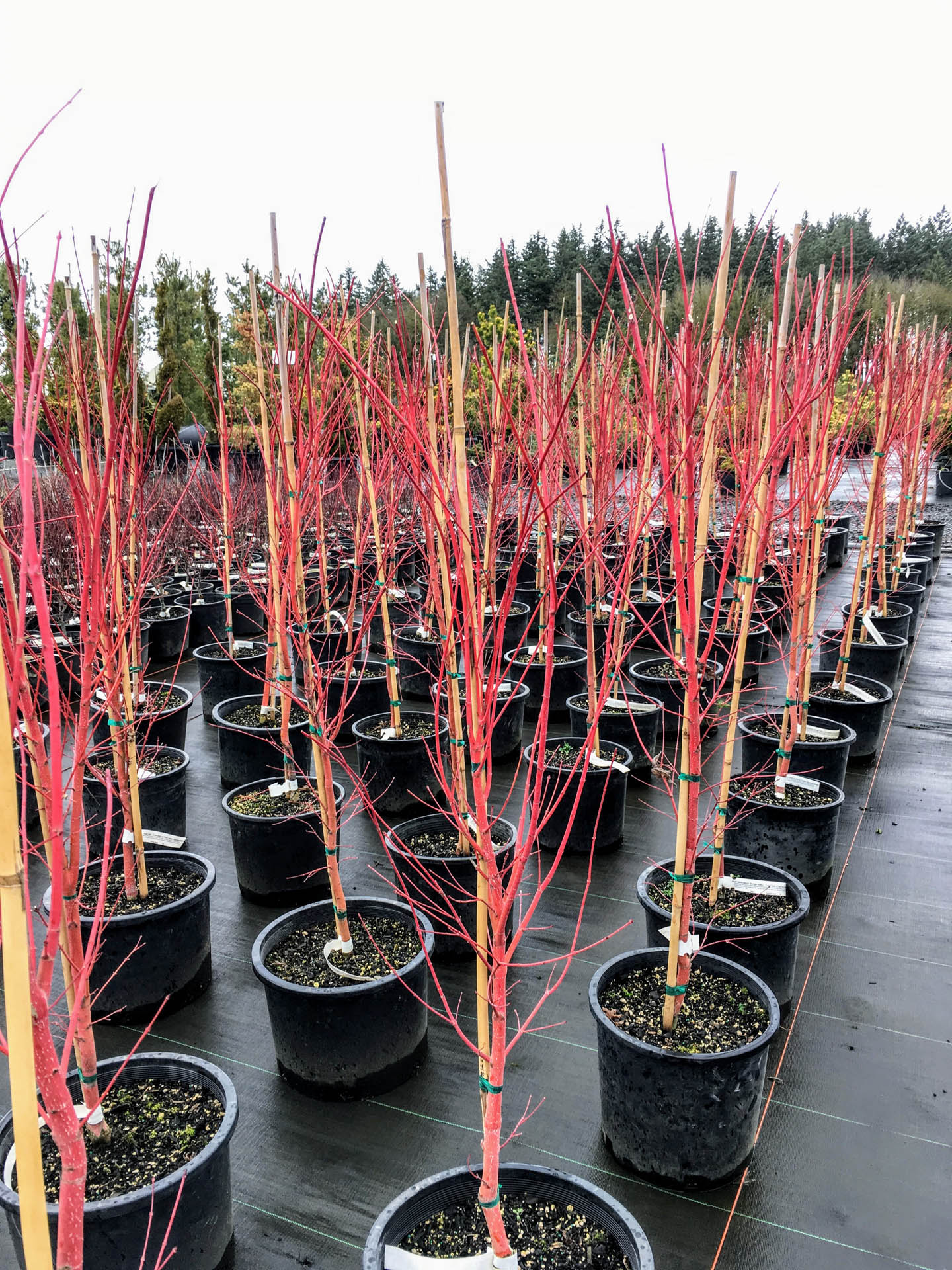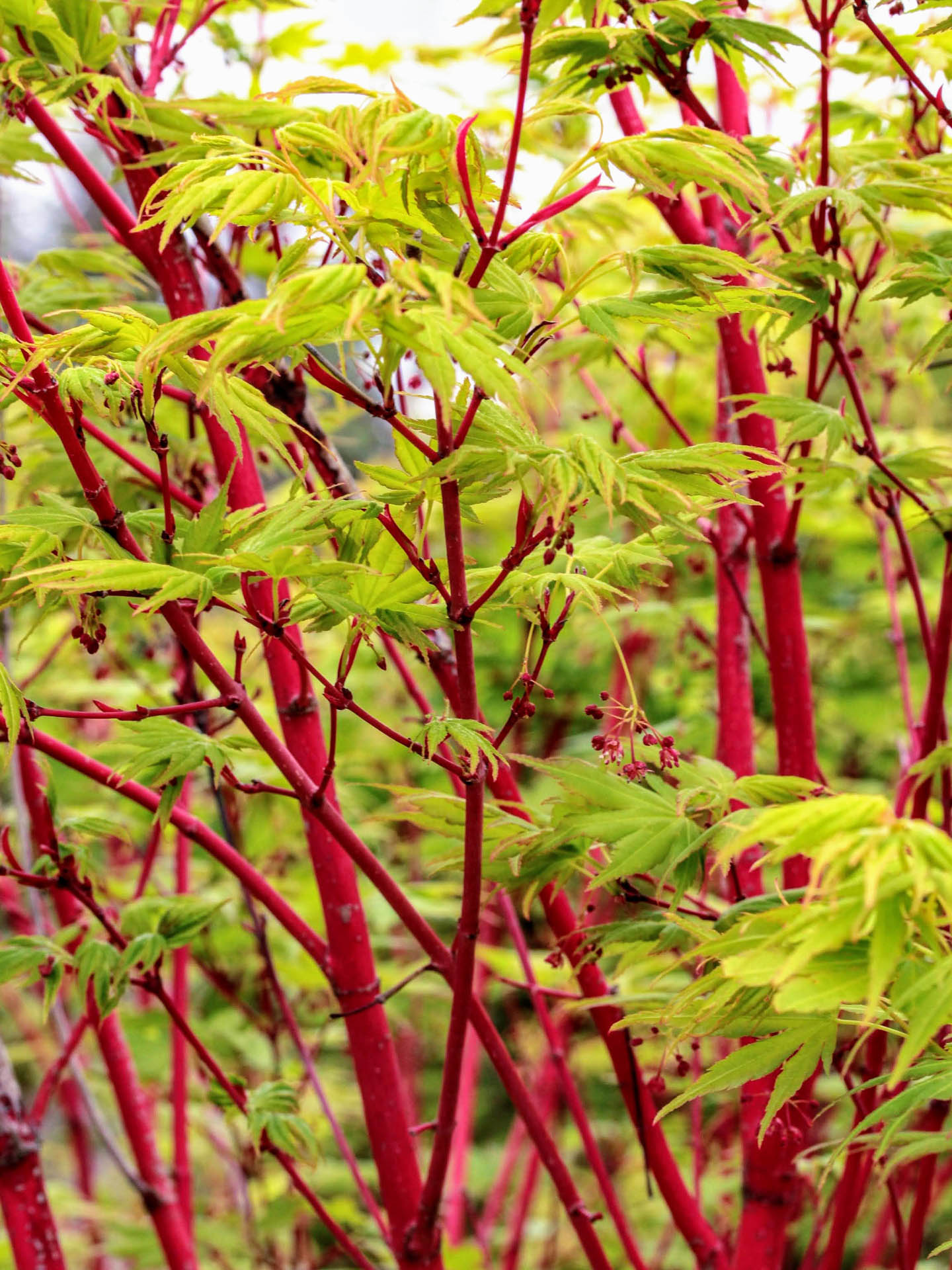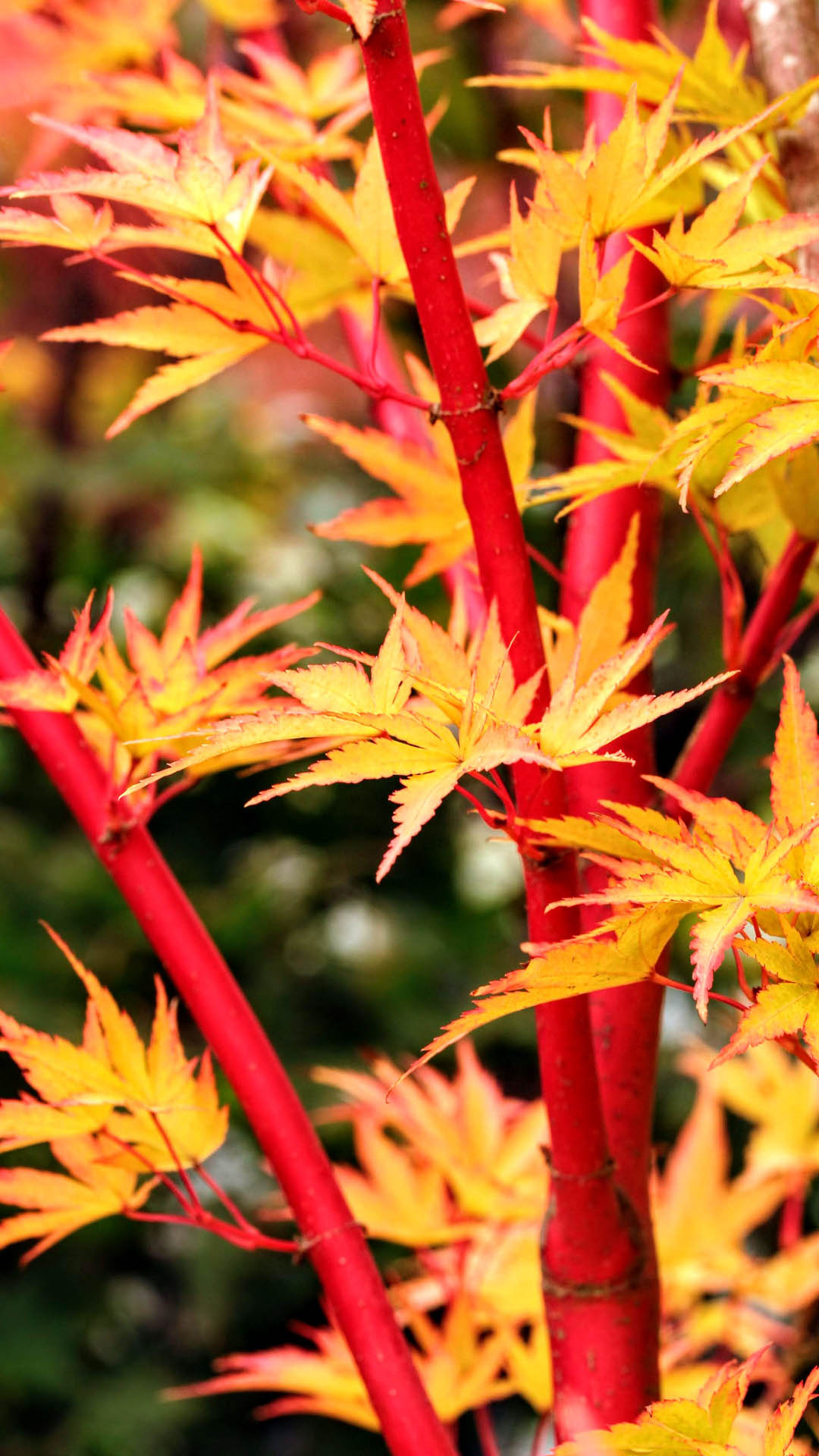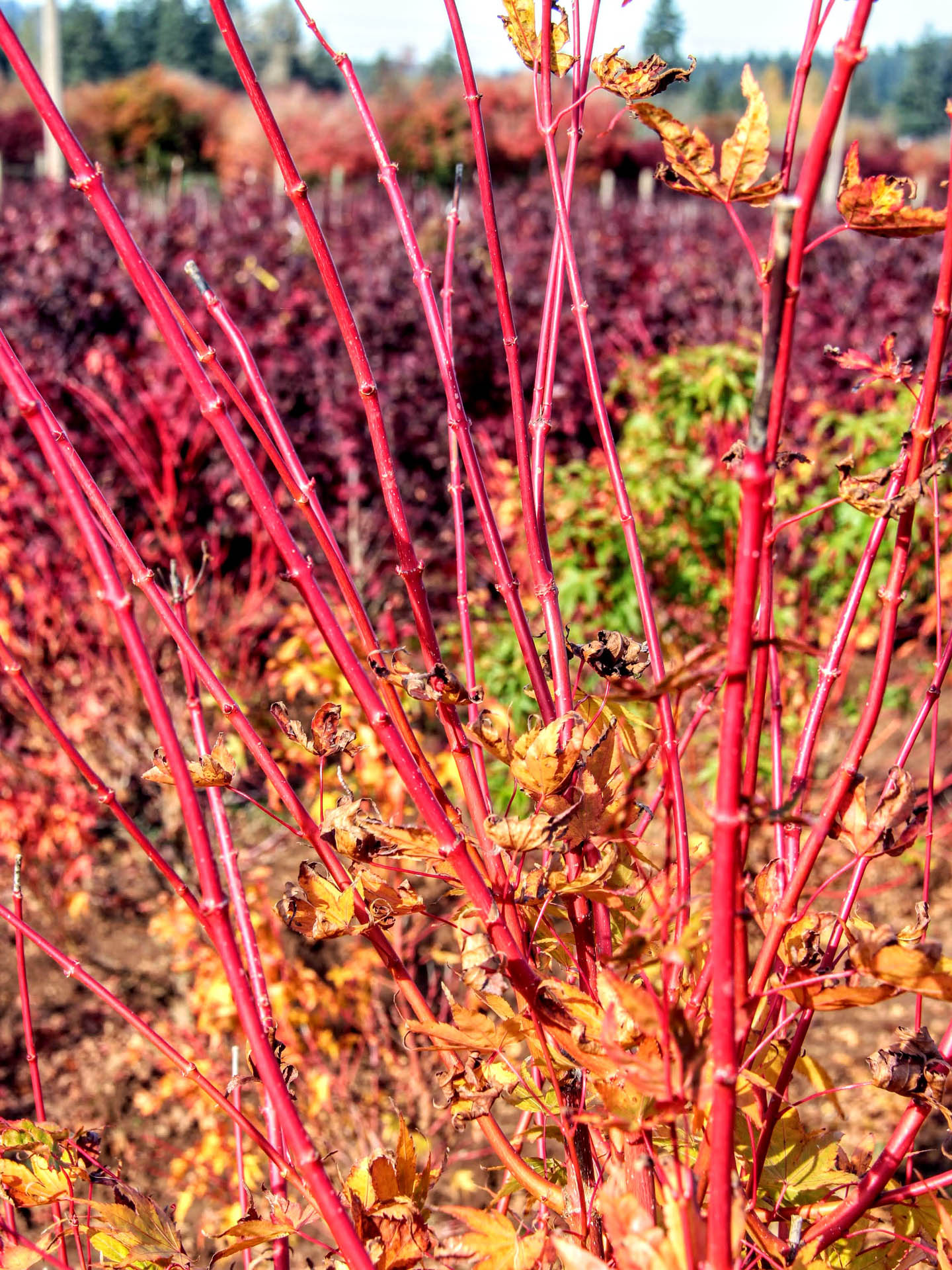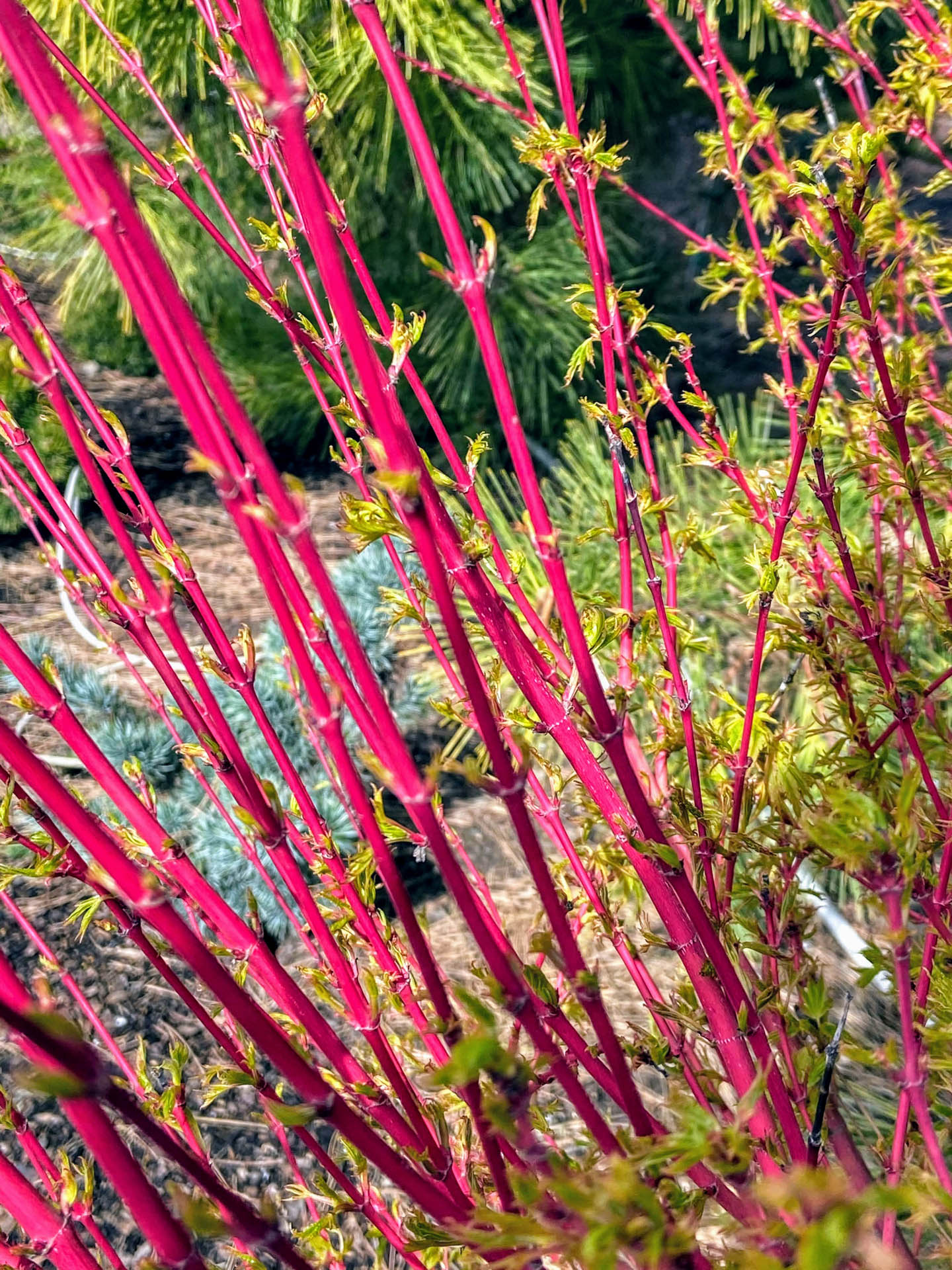
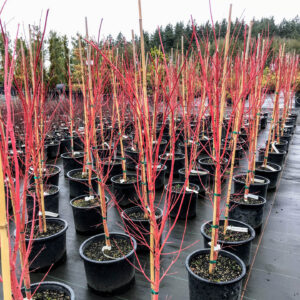
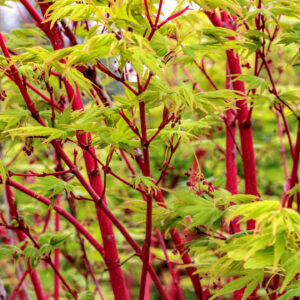
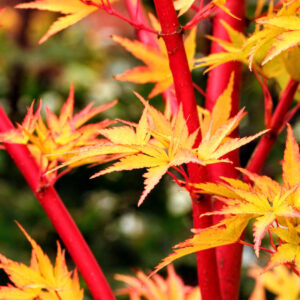
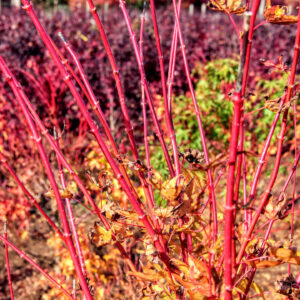
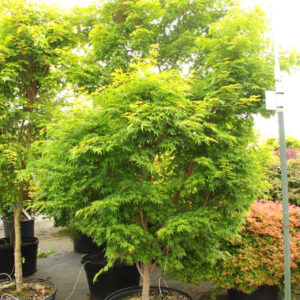
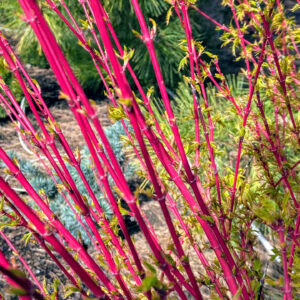
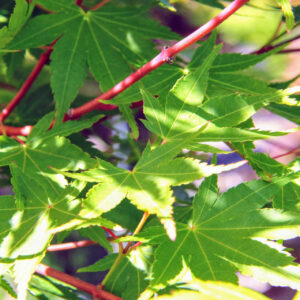
*Photos may demonstrate how the plant grows and do not necessarily pertain to the available crop(s).
Acer palmatum ‘Sango kaku’ Japanese Maple
- Deep pink bark providing year-round color
- Green leaves tinged with red in the spring
- Vase-shaped form
SKU: AcPalm-Sangokaku-0-0
Categories: Acer palmatum, Colorful Twigs, Green, Green Maples, Intermediate, Intermediate Maples, Japanese Maples, Palmate or Matsumurae, Upright, Upright, Zone 6, Zone 7, Zone 8, Zone 9
Tags: All Is Fixed, Popular
Description
Sango kaku is highly regarded for its outstanding, almost fluorescent coral bark, this upright, spreading Japanese maple produces a fabulous show all four seasons. Red margins decorate the yellow-green spring leaves that gradually change to bright green in summer.
USDA Hardiness Map
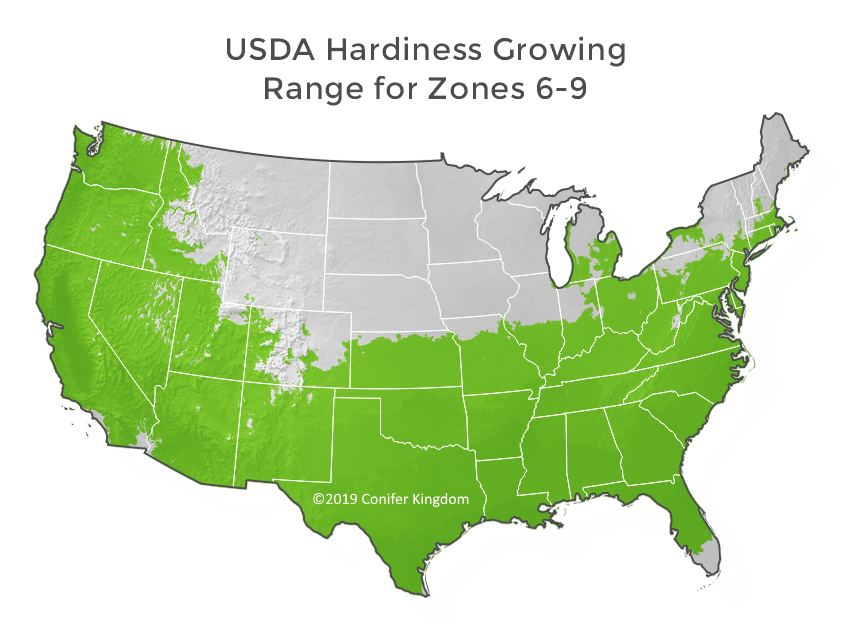
Plant Form
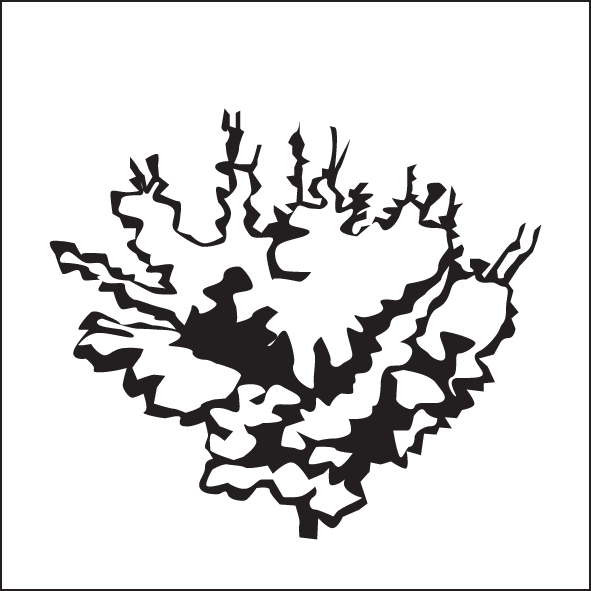
Coral Bark or Coral Tower Japanese Maple is a delightful small tree with beautiful foliage and brilliantly colored bark in the winter. ‘Sango Kaku’ in Japanese means “coral-colored tower.” Sango means sea coral for the blush-colored branches, and Kaku means tower or upward-growing tree. This stunning maple received the Royal Horticultural Society’s Award of Garden Merit in 1993 for its excellent qualities.
Coral Bark is vase-shaped and grows at a moderate rate to 7′ × 5′ in 10 years. Its 5- to 7-lobed leaves emerge pinkish-yellow with red edges in the spring, and small, reddish-purple flowers decorate the tree among the new leaves and turn to red samaras later in the season.
The leaves change to a darker, solid green in the summer and soften to yellow in the fall. After the leaves drop and the temperatures get colder, a brilliant, deep pink color develops on the young branches and twigs, creating a bright spot of color in the winter landscape.
This Japanese maple needs moist, slightly acidic soil in full sun to partial shade in a spot protected from cold winds. It isn’t too particular about the soil type and can even tolerate clay or sand as long as there is enough moisture. Water it regularly, especially during the first two years while it is establishing and during periods of heat and dryness.
In the colder areas of its 6-9 hardiness zones, it can thrive in full sun or partial shade, but morning sun and afternoon shade are best in the warmer areas of its zones. In the cooler regions, it can tolerate full sun, but partial shade brings out the best leaf color, and deep shade will cause the color to fade. Low moisture and too much sun can cause the leaves to scorch, so keep it watered and lay down some mulch to help retain the moisture and keep the roots cool.
With its year-round color, Coral Bark makes a charming addition to a small garden. It does well in a city garden, rock garden, woodland garden, Japanese garden, courtyard, or any small area with the right light. Cold temperatures bring out the color of the reddish twigs and branches, and they’re especially striking in the winter during a snowfall.
Darker-colored companion plants around the tree show off the light-colored leaves from spring through fall and the red branches in the winter. Hollies, with their red berries, cedars, cypresses, pines, junipers, and arborvitaes, provide a contrasting backdrop for the Coral Bark maple. Shrubs, such as rhododendrons, azaleas, mountain laurels, and dwarf conifers, have the same cultural requirements and enhance the beauty of the tree.
Low-growing perennials, such as ferns, hosta, astilbe, hellebore, lithodora, lilyturf, and ornamental grasses, provide some interest at the base of the tree. Groundcovers, like periwinkle, pachysandra, creeping phlox, and spring bulbs, like crocus, snowdrops, glory-of-the-snow, tulips, daffodils, and hyacinth, add a pop of color.
Japanese maples are mainly wind-pollinated, but bees still love to visit the little red flowers in the spring. The tree provides a cover for birds, but deer and rabbits leave it alone.
Coral Bark is vase-shaped and grows at a moderate rate to 7′ × 5′ in 10 years. Its 5- to 7-lobed leaves emerge pinkish-yellow with red edges in the spring, and small, reddish-purple flowers decorate the tree among the new leaves and turn to red samaras later in the season.
The leaves change to a darker, solid green in the summer and soften to yellow in the fall. After the leaves drop and the temperatures get colder, a brilliant, deep pink color develops on the young branches and twigs, creating a bright spot of color in the winter landscape.
This Japanese maple needs moist, slightly acidic soil in full sun to partial shade in a spot protected from cold winds. It isn’t too particular about the soil type and can even tolerate clay or sand as long as there is enough moisture. Water it regularly, especially during the first two years while it is establishing and during periods of heat and dryness.
In the colder areas of its 6-9 hardiness zones, it can thrive in full sun or partial shade, but morning sun and afternoon shade are best in the warmer areas of its zones. In the cooler regions, it can tolerate full sun, but partial shade brings out the best leaf color, and deep shade will cause the color to fade. Low moisture and too much sun can cause the leaves to scorch, so keep it watered and lay down some mulch to help retain the moisture and keep the roots cool.
With its year-round color, Coral Bark makes a charming addition to a small garden. It does well in a city garden, rock garden, woodland garden, Japanese garden, courtyard, or any small area with the right light. Cold temperatures bring out the color of the reddish twigs and branches, and they’re especially striking in the winter during a snowfall.
Darker-colored companion plants around the tree show off the light-colored leaves from spring through fall and the red branches in the winter. Hollies, with their red berries, cedars, cypresses, pines, junipers, and arborvitaes, provide a contrasting backdrop for the Coral Bark maple. Shrubs, such as rhododendrons, azaleas, mountain laurels, and dwarf conifers, have the same cultural requirements and enhance the beauty of the tree.
Low-growing perennials, such as ferns, hosta, astilbe, hellebore, lithodora, lilyturf, and ornamental grasses, provide some interest at the base of the tree. Groundcovers, like periwinkle, pachysandra, creeping phlox, and spring bulbs, like crocus, snowdrops, glory-of-the-snow, tulips, daffodils, and hyacinth, add a pop of color.
Japanese maples are mainly wind-pollinated, but bees still love to visit the little red flowers in the spring. The tree provides a cover for birds, but deer and rabbits leave it alone.
Additional information
| Weight | N/A |
|---|---|
| Latin Name | Acer palmatum 'Sango kaku' |
| Common Name | Coral Bark or Coral Tower Japanese Maple |
| Annual Growth | 9-12" |
| HxW@10 Years | 7'x5' |
| Sun Exposure | Sun/Shade |
| Leaf Type | Palmate |
| Hardiness Zone | Zones 6-9 |
| Color | |
| Form | |
| Growth Rate | |
| Your auto-detected zip code |  |
| hardiness zone based on zip code |  |
| You can also try another zip code |
Related products
-

Acer palmatum ‘Crimson Carole’ Japanese Maple
View Details -
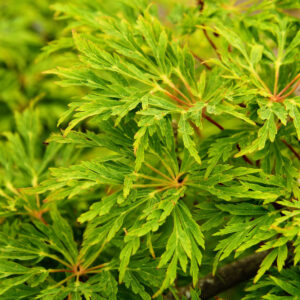
Acer japonicum ‘Green Cascade’ Japanese Maple
View Details -
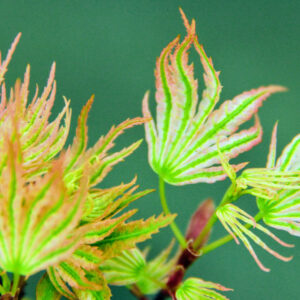
Acer palmatum ‘Abigail Rose’ Japanese Maple
View Details -
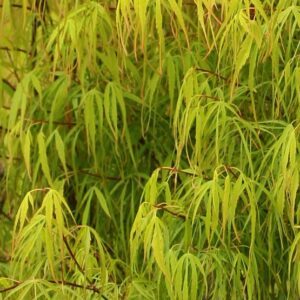
Acer palmatum ‘Koto no ito’ Japanese Maple
$59.99 – $169.99Price range: $59.99 through $169.99 View Details This product has multiple variants. The options may be chosen on the product page


